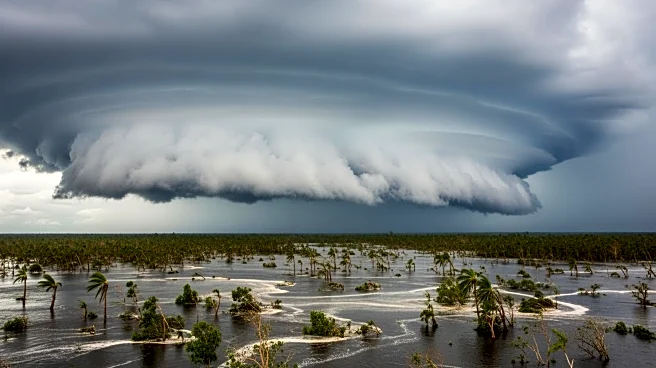What's Happening?
Typhoon Kalmaegi has resulted in severe flooding across the central Philippines, leading to over 40 fatalities and displacing hundreds of thousands. The island of Cebu has been particularly affected, with
entire towns inundated and significant infrastructure damage reported. The typhoon brought unprecedented rainfall, causing rapid water level rises and trapping residents. Local authorities have been conducting evacuations, and rescue operations are ongoing. The storm has also led to a military helicopter crash during relief efforts, resulting in six fatalities.
Why It's Important?
The disaster underscores the increasing intensity and frequency of typhoons in the region, attributed to climate change. The impact on the Philippines, a country already vulnerable to natural disasters, highlights the urgent need for improved disaster preparedness and infrastructure resilience. The loss of life and displacement of communities emphasize the human cost of such events, while the economic implications include damage to property and disruption of local economies. The incident also raises concerns about the safety of relief operations in hazardous conditions.
What's Next?
As the typhoon continues to move westward, further weather-related challenges are anticipated. Authorities are likely to focus on ongoing rescue and relief efforts, as well as assessing and addressing the damage. The situation may prompt discussions on enhancing disaster response strategies and infrastructure improvements to better withstand future storms. International aid and support may also play a role in recovery efforts.
Beyond the Headlines
The event highlights the broader implications of climate change on weather patterns and the need for global cooperation in addressing environmental challenges. It also raises questions about the adequacy of current disaster management systems and the importance of community resilience in the face of natural disasters.











